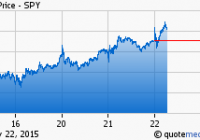Are Multi-Asset Funds A Threat To The Fund Industry?
By Detlef Glow The chase for yield by all kinds of investors has driven up the popularity of so-called multi-asset funds, since the funds promise to be widely diversified and therefore able to generate returns from all kinds of assets. In a number of cases the promise also extends to all kinds of market conditions, since some of the funds have the ability to use shorts or so-called market-neutral strategies. With regard to the investment objectives of multi-asset funds, these funds can be considered as really actively managed funds. That mixed- or multi-asset funds are privileged products for European investors is shown in the impressive inflows these funds have been able to gather. Asset allocation funds were not only the best selling fund sector for 2013 (+€61.6 bn), they also led the table for the first 11 months of 2014. In this period asset allocation products gathered €63.3 bn, far ahead of the second and third best selling sectors: mixed-asset conservative (+€27.9 bn) and bonds EUR (+€27.5 bn). The strong inflows into the multi-asset sector, combined with the fact that more and more fund promoters are launching multi-asset products to benefit from this trend, have raised questions and concerns about multi-asset products. One of these questions is whether all of these new managers are able to handle multi-asset portfolios, especially in tough times. Will these managers be able to meet the expectations of their investors in bear markets? The fear behind this question is linked to the negative image of the fund industry that stemmed from a number of absolute return funds failing to meet their goals during the 2008 financial crisis. From my point of view this is a valid concern: some managers may not be able to handle rough markets. They might not be experienced in the use of shorts, or they may not have the right risk management tools in place. Another point of concern is that some asset managers try to run their multi-asset portfolios with small teams to cover a large number of asset classes, or they are managing these portfolios in addition to other portfolio management tasks. In this regard, investors should make sure the fund management team of their fund is focused on the multi-asset portfolio and has enough resources to handle all the asset classes in the portfolio. The second major concern I have heard often in recent months is about fund flows. Since multi-asset products seem to have been the investment of choice of both institutional/professional and private investors in the past two years, some observers state that the flows might have reached their peak. Investors may start to pull out their money from these funds, which could lead to major outflows and therefore disruptions in some asset classes. I do not think that private investors will stop investing in multi-asset products as long as the funds fulfill their investment objectives and the goals of the investors. But it looks a bit different on the institutional side. New regulations such as Solvency II, with its high reporting standards, may cause some outflows from mutual funds, regardless of whether the fund promoters are able to deliver holdings data and other statistics on time. Another reason for outflows might be because asset managers are using multi-asset funds instead of buying the single building blocks and building multi-asset portfolios of their own. That would be the only way for them to have their asset allocation fully under control. From my point of view both concerns are valid; institutional outflows could easily offset inflows, which might cause outflows from the asset allocation sector. Even so, I would not expect any major disruptions in the utilized asset classes from this, since major outflows are unlikely to happen from one day to the next. In addition, I don’t think all the institutional investors who have bought multi-asset funds are able to manage this kind of portfolio in-house and therefore need an external manager to participate in these broadly diversified investment strategies. I would assume some questions and concerns around multi-asset funds are valid, but as long as at least the major funds in this market segment continue to deliver on their investment objective, the fund category is not a major threat for the European mutual fund industry. From my point of view, the major risk for the fund industry would be if one of the top-selling funds in this segment fails to deliver on its investment objective or faces major losses during a crisis. That would once again damage the reputation of the fund industry, which might then irrevocably lose investors’ trust. The views expressed are the views of the author, not necessarily those of Thomson Reuters.
